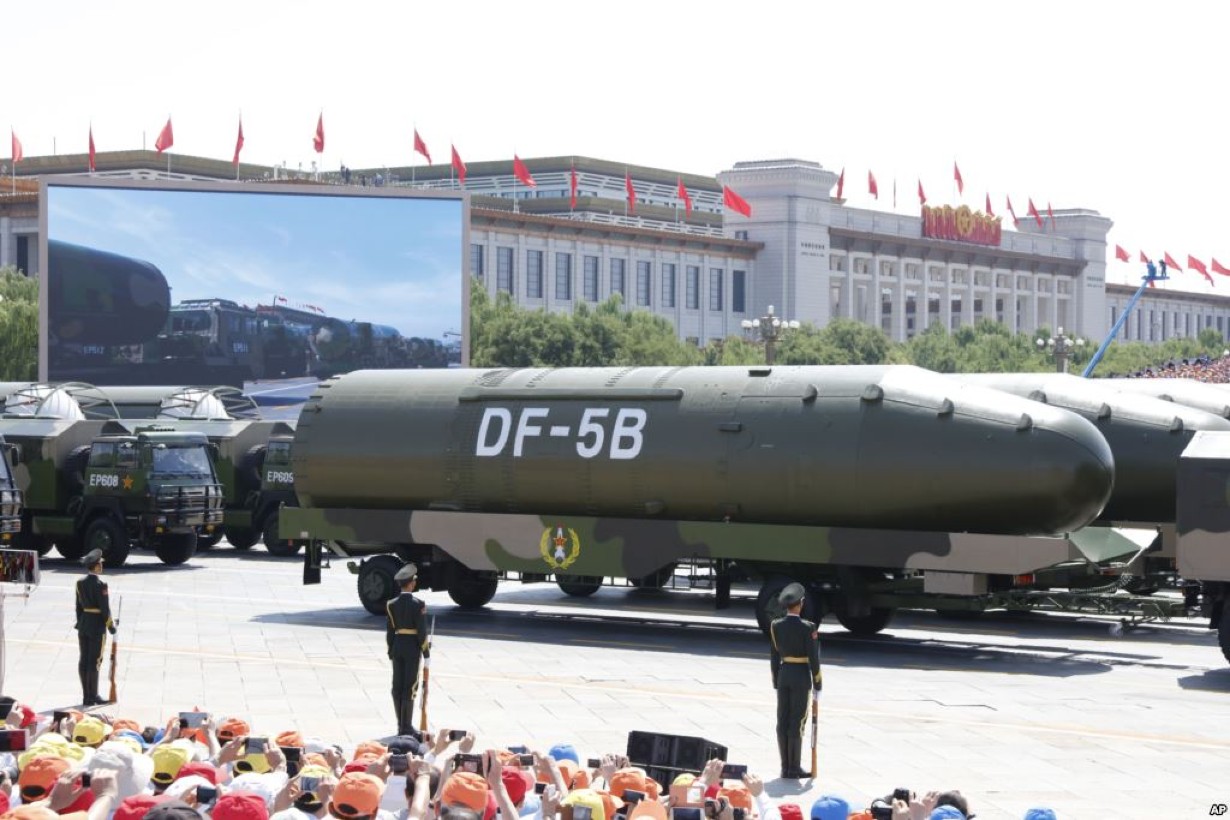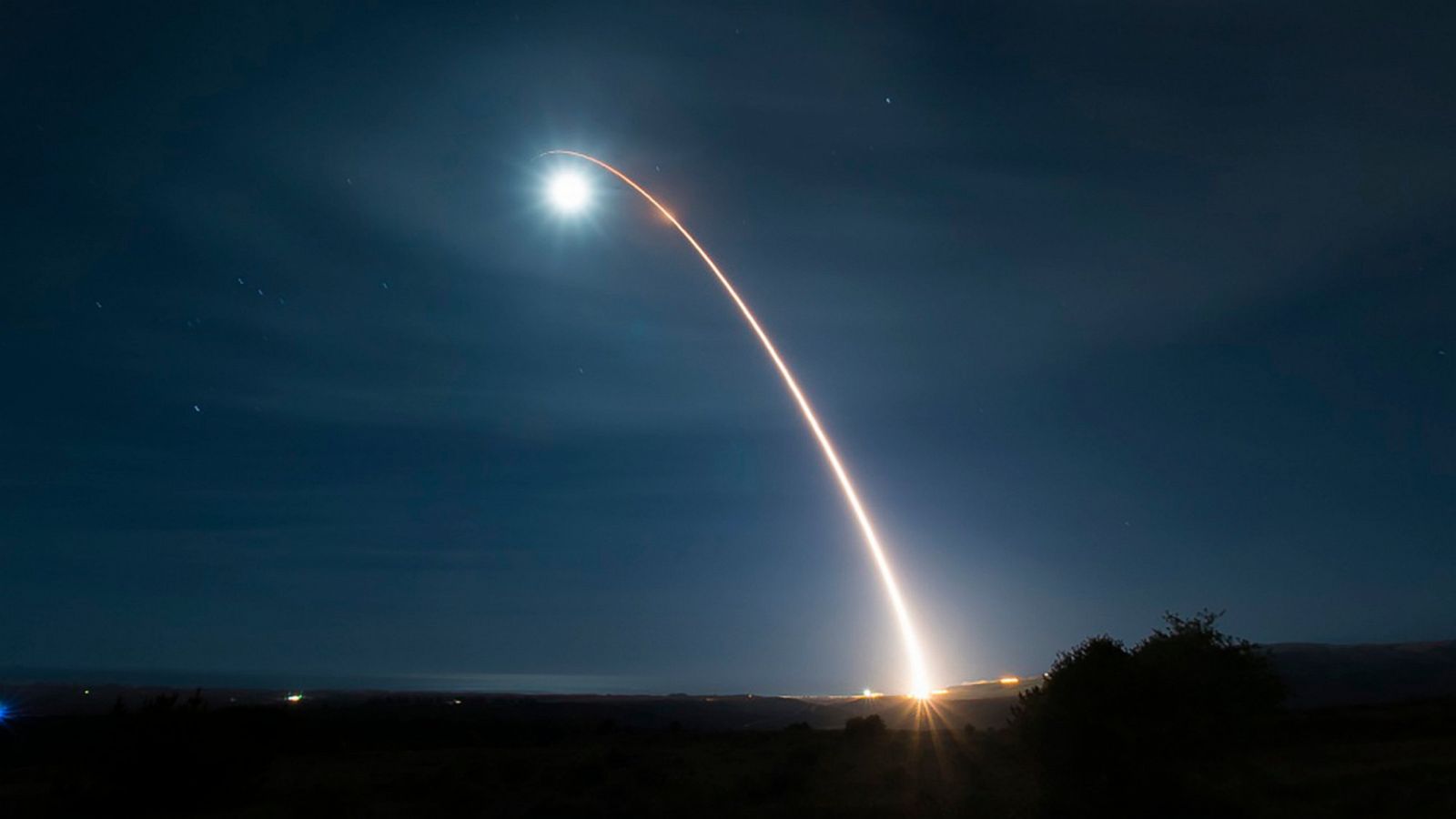In its annual China Military Power Report published on October 19, the US Defense Department has estimated explicitly that China had over 500 nuclear weapons in its arsenal as of May and will likely have over 1,000 warheads by 2030.
More importantly, the Pentagon’s much-awaited annual report to Congress highlights that China is increasing the number of ways it could attack the continental United States. These include developing the first conventionally armed intercontinental missile and submarine-launched weapons that could be fired from its territorial waters.
The US Department of Defense said China “may be exploring development of conventionally armed intercontinental-range missile systems.” Intercontinental ballistic missiles, or ICBMs, are typically intended to deliver nuclear bombs, but conventionally arming them to hit the continental US would allow China to strike without resorting to nukes.
The report cautions that China could “threaten conventional strikes against targets in the continental United States, Hawaii, and Alaska” if a conventionally armed variant were to be built and deployed.
The Pentagon claims that the DF-5C, one of the PLA’s several newly developed and upgraded nuclear-armed intercontinental ballistic missiles, may be equipped with massive warheads with multi-megaton yields.
These missiles are in various phases of development and/or fielding. It is now possible for Chinese silos, which number in the hundreds, to be equipped with DF-31 ICBMs that are already in service.

The report also disclosed China’s progress in developing ballistic missile submarine capability. It has long been observed by US policymakers and military analysts that China wants to be able to strike the mainland United States with ballistic missiles launched from submarines in the South China Sea.
However, it has been considered a future objective up to the report from last year. With an estimated 7,200 kilometers of range, the regular JL-2 ballistic missile requires a Jin-class submarine to station itself south of Japan to target Hawaii or in the west of Hawaii for possible strikes on the western US mainland.
EurAsian Times earlier reported that China maintained at least one nuclear-armed ballistic missile submarine permanently at sea, increasing pressure on the United States and its allies. The deployment of these nuke submarines is complimented by long-range land-launched missiles that can strike the heart of the United States.
China’s six Jin-class ballistic missile submarines reportedly patrolled the South China Sea “near-continuously” from Hainan Island. The Pentagon reported this earlier. The Yulin Naval facility, home to PLA-N’s submarines, is located on Hainan Island, sometimes called China’s Hawaii.
According to the Pentagon, China can now, for the first time, reach the United States mainland from Chinese coastal waters because of the JL-3’s multiple warheads and projected range of more than 10,000 kilometers.
According to that report, China’s Navy now possesses over 370 warships and submarines, an increase of over 340 vessels it had the previous year. Beijing currently boasts the largest navy in the world, and President Xi Jinping’s goal of making China the leading military force in the world depends heavily on the country’s growing naval power.
Nuclear Weapons Arsenal Growing On War Footing
China has surpassed previous projections and is developing nuclear missiles at a pace never seen before. However, the much-anticipated report states that while it accumulates more nuclear weapons, China still has far fewer atomic warheads than the United States and Russia.
There are around 3,700 nuclear warheads in the United States’ arsenal, of which about 1,419 are for strategic weapons. On the other hand, Russia possesses a stockpile of 4,489 nuclear warheads and has deployed around 1,550 nuclear weapons, according to the data curated by the Federation of American Scientists.
“We see the PRC (People’s Republic of China) continuing quite rapidly to modernize and diversify and expand its nuclear forces,” a senior US official told reporters during a briefing on the report. Incidentally, Beijing has over 400 operational nuclear heads in 2021, 100 less than the latest estimates that have set a worrying precedent.
” What they’re doing now, if you compare it to what they were doing about a decade ago, it far exceeds in terms of scale and complexity,” the official said. “They’re expanding and investing in their land, sea, and air-based nuclear delivery platforms, as well as the infrastructure required to support this major expansion of their nuclear forces.”
The paper states that even though Chinese officials have publicly said that the new “fast breeder” reactors and reprocessing facilities are meant for “peaceful purposes,” China will likely use them to manufacture plutonium for its expanding nuclear weapons program.

According to the study, China has also probably finished building its three new solid-fueled missile silos by 2022, including at least 300 new intercontinental ballistic missile silos, and has placed “at least some” ICBMs within the silos.
In December last year, there were speculations in the US Congress that Beijing may have amassed more nuclear warheads than Washington. The fears were raised due to the US Strategic Command’s (STRATCOM) classified determination to Congress by a clause in the fiscal 2022 National Defense Authorization Act.
According to the clause, the Command must notify the US Congress if China surpasses the US in one of the three components concerning its Inter Continental Ballistic Missile (ICBM) arsenal, allowing the US Congress to be informed if China deploys more ICBMs or ICBM launchers than the United States.
The report comes days after a US Congressional Committee recommended that the US heavily modernize and diversify its nuclear arsenal to fight Russia and China’s nuclear forces and infrastructure in response to what it perceives as a dual threat from two peer rivals.
The report’s timing is also significant given that the US administration is getting ready for what might be President Joe Biden and Chinese Leader Xi Jinping’s in-person meeting in California next month.
Tensions between the two rivals are also riding high. Earlier this week, the Pentagon released several photos and videos showcasing increased incidents in which Chinese fighter jets were recorded harassing American military aircraft in the South and East China Sea both this year and last.
The latest report becomes another thorn in the already unsavory relationship between the two countries.
- Contact the author at sakshi.tiwari9555 (at) gmail.com
- Follow EurAsian Times on Google News




